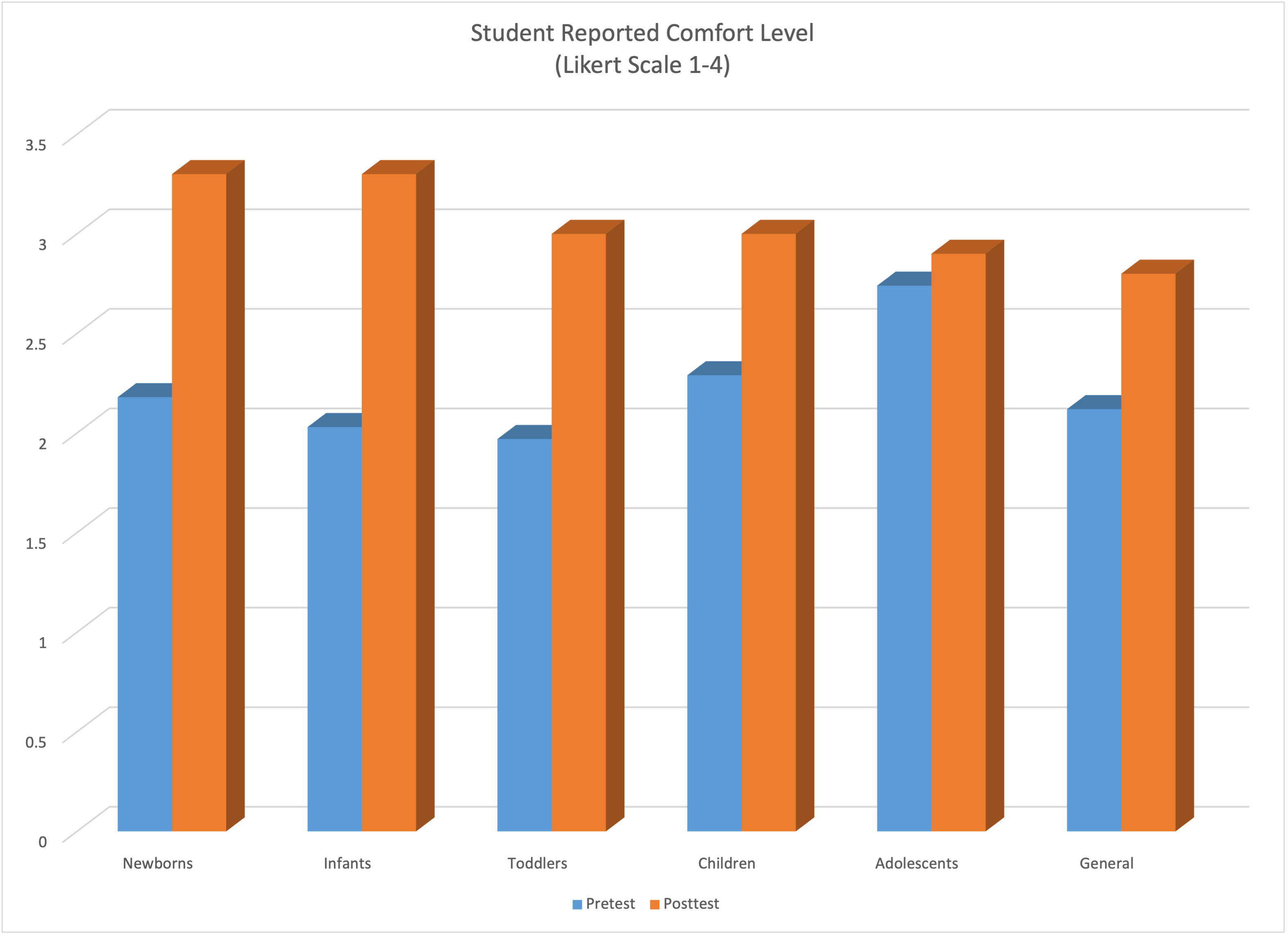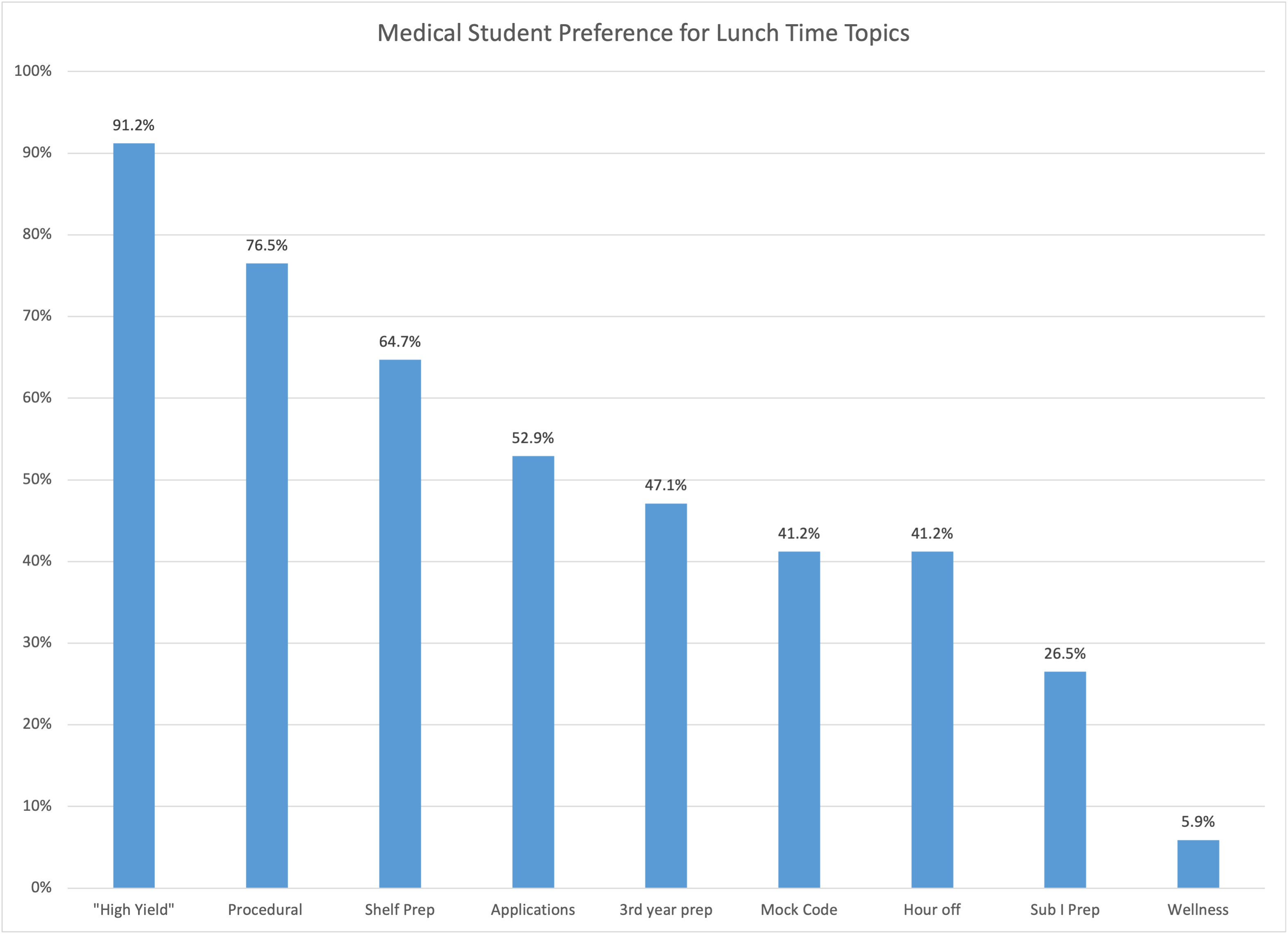Medical Education: Medical Student
Category: Abstract Submission
Medical Education 9 - Medical Education: Resident II
248 - Lessons Learned: A Novel Approach to Resident-Led Medical Student Education
Sunday, April 24, 2022
3:30 PM - 6:00 PM US MT
Poster Number: 248
Publication Number: 248.333
Publication Number: 248.333
Benjamin Wagner, Tripler Army Medical Center, Honolulu, HI, United States; Shamim S. Nafea, Tripler Army Medical Center, Honolulu, HI, United States; Dolores Mullikin, Uniformed Services University of the Health Sciences F. Edward Hebert School of Medicine, Honolulu, HI, United States
- BW
Benjamin Wagner, MD
Pediatric Resident
Tripler Army Medical Center
Honolulu, Hawaii, United States
Presenting Author(s)
Background: Anecdotally, medical students on their pediatric clerkship at our institution request increased focus on shelf relevant material. To address this we instituted a resident led lecture series consisting of four focused lectures on shelf relevant topics. This also offers residents a chance to gain experience in teaching and allows near peer interaction to facilitate informal mentorship.
Objective: To meet the medical student request for more time dedicated to shelf relevant material.
Design/Methods: 30 medical students were given surveys at the beginning and end of their clerkship rotation in pediatrics. To confirm our objective, medical students were asked how they would like for student-focused didactics to be structured. Questions were asked regarding comfort level in general pediatrics as well as comfort level in evaluating patients at specific stages along the pediatric lifespan. Responses were graded on a Likert scale ranging from 1 (least confident) to 4 (most confident). A Fisher’s exact test 2x4 analysis was used to compare the pre and post surveys.
Results: The most commonly selected preferences for resident led didactics were high yield topics for shelf exams (92.2%) and procedural discussions (76.5%). Notably 40% also indicated that they would like the hour as an hour of free time. Students showed an increase in comfort overall in evaluating pediatric patients. This difference was most noticeable for newborns (2.18 vs 3.3, p = 0.01) and infants (2.03 vs 3.3, p = 0.0001), but true as well for toddlers (1.97 vs 3, p = 0.008) and children (2.29 vs 3, p = 0.017). Comfort level with general pediatric knowledge also increased (2.12 vs 2.8, p = 0.005).Conclusion(s): Our surveys confirmed our objective and impetus for the intervention, that medical students prefer didactics on high yield shelf topics. Interestingly, 40% indicated preference for an hour of free time, which we will keep in mind as we continue to structure our clerkship. Confidence increased across the pediatric life-span, with the most significant differences in the newborn and infant age groups. Confidence with toddlers, children and adolescents, although increased, is less significant. This offers insight on improvement for not only this intervention but also opportunities for improvement in the clerkship as a whole. As we continue to improve this implementation we plan to evaluate the perceived benefit from students. Medical students desire increased shelf relevant didactics during their pediatric clerkship; instituting a resident led lecture series offers one option to meet this.
Student Self-Reported Comfort Level
Medical Student Preferences for Lunch Time Topics
Objective: To meet the medical student request for more time dedicated to shelf relevant material.
Design/Methods: 30 medical students were given surveys at the beginning and end of their clerkship rotation in pediatrics. To confirm our objective, medical students were asked how they would like for student-focused didactics to be structured. Questions were asked regarding comfort level in general pediatrics as well as comfort level in evaluating patients at specific stages along the pediatric lifespan. Responses were graded on a Likert scale ranging from 1 (least confident) to 4 (most confident). A Fisher’s exact test 2x4 analysis was used to compare the pre and post surveys.
Results: The most commonly selected preferences for resident led didactics were high yield topics for shelf exams (92.2%) and procedural discussions (76.5%). Notably 40% also indicated that they would like the hour as an hour of free time. Students showed an increase in comfort overall in evaluating pediatric patients. This difference was most noticeable for newborns (2.18 vs 3.3, p = 0.01) and infants (2.03 vs 3.3, p = 0.0001), but true as well for toddlers (1.97 vs 3, p = 0.008) and children (2.29 vs 3, p = 0.017). Comfort level with general pediatric knowledge also increased (2.12 vs 2.8, p = 0.005).Conclusion(s): Our surveys confirmed our objective and impetus for the intervention, that medical students prefer didactics on high yield shelf topics. Interestingly, 40% indicated preference for an hour of free time, which we will keep in mind as we continue to structure our clerkship. Confidence increased across the pediatric life-span, with the most significant differences in the newborn and infant age groups. Confidence with toddlers, children and adolescents, although increased, is less significant. This offers insight on improvement for not only this intervention but also opportunities for improvement in the clerkship as a whole. As we continue to improve this implementation we plan to evaluate the perceived benefit from students. Medical students desire increased shelf relevant didactics during their pediatric clerkship; instituting a resident led lecture series offers one option to meet this.
Student Self-Reported Comfort Level

Medical Student Preferences for Lunch Time Topics

